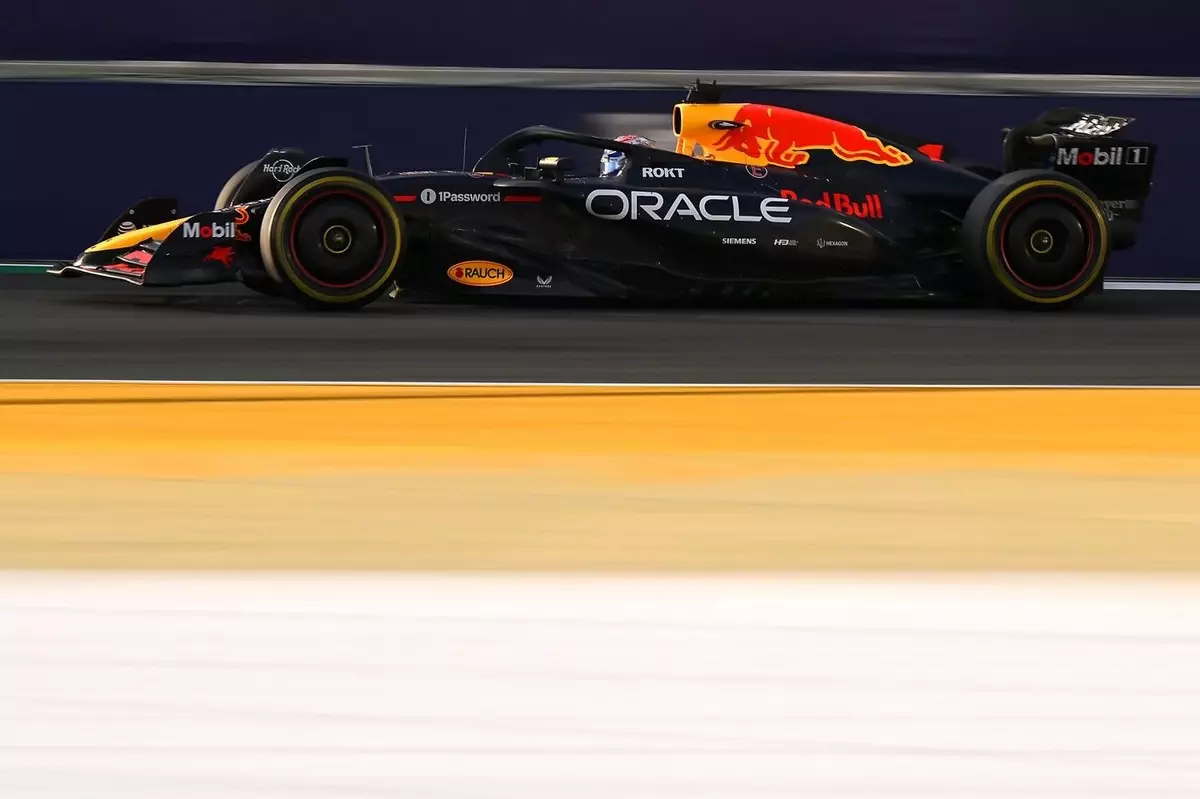In the highly competitive world of Formula 1, perception can make or break a team’s morale. Recently, quite an uproar has emerged concerning Red Bull Racing, a seemingly invincible team with its two-time world champion, Max Verstappen. An air of crisis appears to loom over the team. The cacophony of whispered concerns about their performance has reached fever pitch—prompting urgent meetings and behind-the-scenes discussions reminiscent of a beleaguered government under siege. Yet, how much truth lies behind the sensationalized narratives? While the team finds itself a mere eight points away from leading the championship, the unsettling question remains—have the paddocks of Red Bull transformed into a pressure cooker of instability?
The backdrop of these tumultuous times can be traced back to a post-race gathering involving key team personalities: team principal Christian Horner, technical director Pierre Wache, and driver advisor Helmut Marko. Juxtaposed against their revitalized championship ambitions, these urgent meetings might suggest that the organization is grappling with some underlying issues that need careful navigation. Although Horner has vigorously asserted that these discussions do not equate to ‘crisis talks,’ their very nature indicates urgency—one that should not be understated.
Problems Beneath the Surface
One of the prevailing issues plaguing Red Bull is their concerning disconnect between simulation data and on-track performance. When discussing such a disunity, we’re not merely talking about fractions of a second lost; we’re delving into a fundamental breakdown in the predictive capabilities of their engineering tools. These discrepancies can result in the team being left bewildered—having no clear understanding of how to coax the car into optimal performance. The perils of inconsistent data are magnified within the unique constraints of Formula 1, where split-second decisions can alter race trajectories.
The genuine concern for Red Bull is that their struggles don’t seem to be transient. Displaying erratic performance is detrimental not just to victories, but also to the team’s long-term credibility. The underlying issues they face could take time to mend, with inadvertent hiccups undermining their need for stability. It is a precarious balancing act that can transform success into vulnerability at the blink of an eye.
The Historic Churn of Innovation
Red Bull’s historical journey is painted with ambitions to evolve its technical prowess. Horner’s oft-repeated quip regarding their outdated wind tunnel—a ‘relic of the Cold War’—highlights a team aware of its challenges yet seemingly reluctant to invest in the monumental shifts necessary for a more competitive edge. That the team is contemplating a new wind tunnel signals an admission that fundamentals must undergo evolution. The winds of change may be blowing, yet the time taken for planning, procurement, and eventual implementation places a question mark over their immediate performance.
Yet there remains a paradox worth noting—despite the aging tools and technology, Red Bull continues to extract remarkable performances from its drivers. Verstappen’s unexpected triumphs show that even with misalignment in expectations and reality, the team is capable of monumental feats. But as they delve into fresh iterations, the question lingers—can they maintain such highs in an era that seems increasingly defined by collaboration and predictability?
The Competitive Landscape
The stark reality is that competitor teams, such as McLaren and Ferrari, are rapidly closing the performance gap. Such convergence within the sport is both exhilarating and nerve-wracking; each minor enhancement represents a significant investment of time, energy, and resources. As the regulations mature, finding additional performance becomes increasingly elusive. Red Bull’s longstanding advantages are at risk of being neutralized by rivals honing their capabilities.
This pressing need to adapt and respond may be leading the senior management to the proverbial table, where strategies must be reevaluated and innovation must flourish. The racing world thrives on the principle of evolution—a team that cannot evolve risks getting left behind. With each passing race, the tension mounts, as teams continue to burrow deeper into technical intricacies hoping to find solutions where none currently exist.
A Future Uncertain Yet Impulsive
The very nature of motorsport dictates that rapid changes be made both on and off the track—not to mention the added pressure when the stakes are as high as they are in Formula 1. Red Bull’s daring management must strike a balance between immediate performance fixes and long-term sustainability of their systems for success. The interplay of resource allocation, development timelines, and driver satisfaction becomes a race of its own, fostering a melting pot of internal challenges.
As these advancements take root, the impatience exhibited by Verstappen raises another layer of urgency. When a champion driver feels the internal discontentment, it risks unraveling some of the very stability that teams work to safeguard. Red Bull Racing stands at a precipice, ready for transformation amidst a myriad of challenges that, if successfully navigated, could elevate them back to an unequivocal state of dominance.
In this ever-evolving arena, every whisper, every tension, and every meeting can redefine a team’s trajectory. The collective challenge before Red Bull Racing may be as audacious as it is transformative—a pivotal moment that could determine their legacy in Formula 1 history.


Leave a Reply